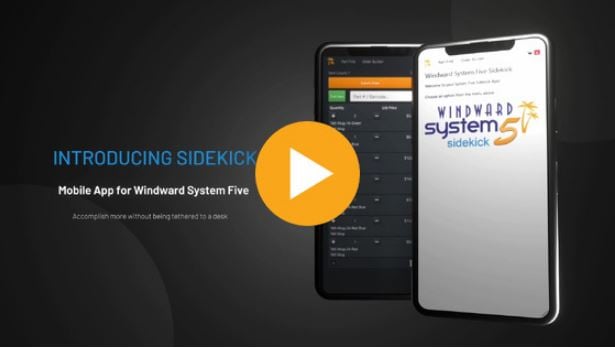Physical Inventory Count Using a Barcode Scanner
Explanation:
If you are running System Five On Cloud, or if you are running System Five over Terminal Services, there is an easier way to do the Physical Inventory Count, even if you don't have a data collector. It will require a wireless internet connection, a laptop and a barcode scanner. A cart to move the laptop around would also be convenient.
Creating Your Scan Batches
- Open Physical Inventory Count
- Click on Scan Batch Tab
- Click NEW button
- Set Scan Source to Direct Scan
- Click Build button
- Once it takes you to the direct scan tab, go back to the main tab and give your batch a name in the Description field.
- Give your scan batch a meaningful name like “STORE FRONT JENNY”
- Now go back to the Direct Scan Tab and click on the first Part Number field.
- Scan the first item’s barcode
- If you only want a quantity of 1, you can scan the next barcode because the default quantity will always be 1.
- If you need a different quantity, you need to click on the quantity to change it
- or scan the barcode multiple times. However, this will create additional lines with quantities of 1
- If you make a mistake and need to delete a line, just highlight the item number and hit Ctrl + Delete on your keyboard.
- If you enter a wrong quantity, just highlight the quantity you want to change and type the new quantity on the keyboard.
- Once you have scanned all the items in your area, you need to save your scan batch.
- Now you can close the batch and continue to your next area. The new batch will show if you click on the find button.
- Repeat this process to create additional scan batches.
- Once all scan batches have been created you can move on to Creating the count batches.
Creating Count Batches
You will create three counts
- Scanned Counts
- Non-Counted
- Clean Up
SCANNED COUNTS
- The First Batch is an uninitialized stock count that you will attach all the scan batches to.
- Make sure that all check boxes in the options tab are UN-checked.
- Create the count batch, give it a recognizable name such as Kelowna Scanned Items, then Build and close it.
- Note the name or batch number.
- Open each scan batch and attach them to this count batch.
- Make any changes to the counts as needed, and run the variance report.
- Export to Excell and print
- Spot Check Items that count looks incorrect.
- A staff member will verify the counts before processing, and again adjust any counts as needed.
- Ensure that “Clear Oversold When Processed” is checked, and now you can process the batch.
NON COUNTED
- Run a second count batch, and this time it will be a periodic stock count, only showing items that System Five is showing as being in stock. Also DO NOT exclude items that are marked for deletion.
- Set the date or time to be prior to when the previous count was done.
- This will show all remaining stock items that are showing a quantity, but was not counted (scanned).
- Essentially this is all missing stock, or mis-entered stock quantities.
- Zero all counts, run the variance report, and ensure that “Clear Oversold When Processed” is checked.
- A staff member will verify the counts again (spot Check), and once that is done, you can process this batch.
CLEANUP
- Run a third count batch. This time we want to see all remaining inventory, including items marked for deletion.
- This batch will show everything with a zero count that has not been counted in the previous batches.
- Again… set the date or time to be prior to when the previous count was done.
- Zero all counts, run the variance report, and process that batch.
Created by Steve Wind September 11 2018














